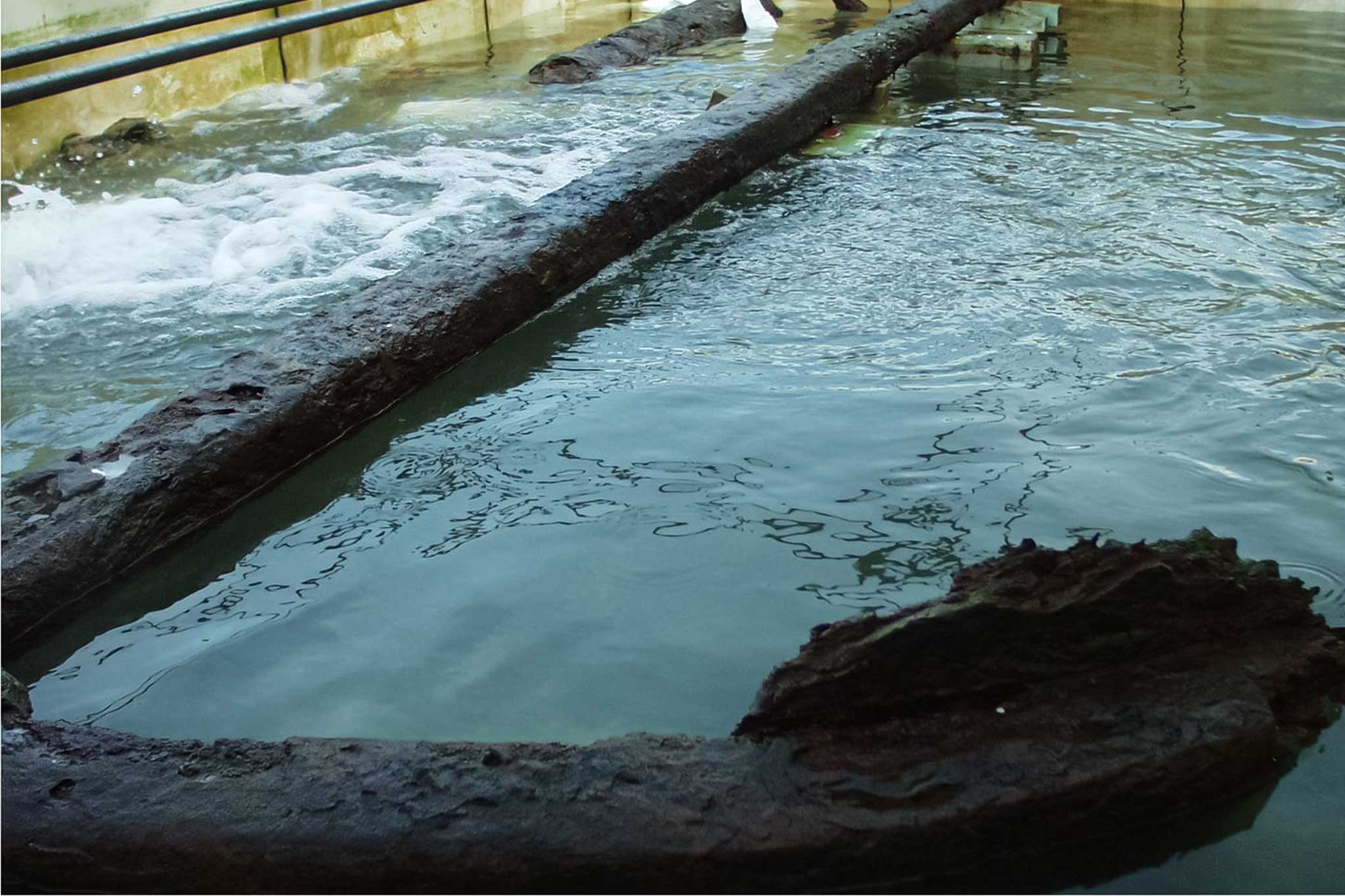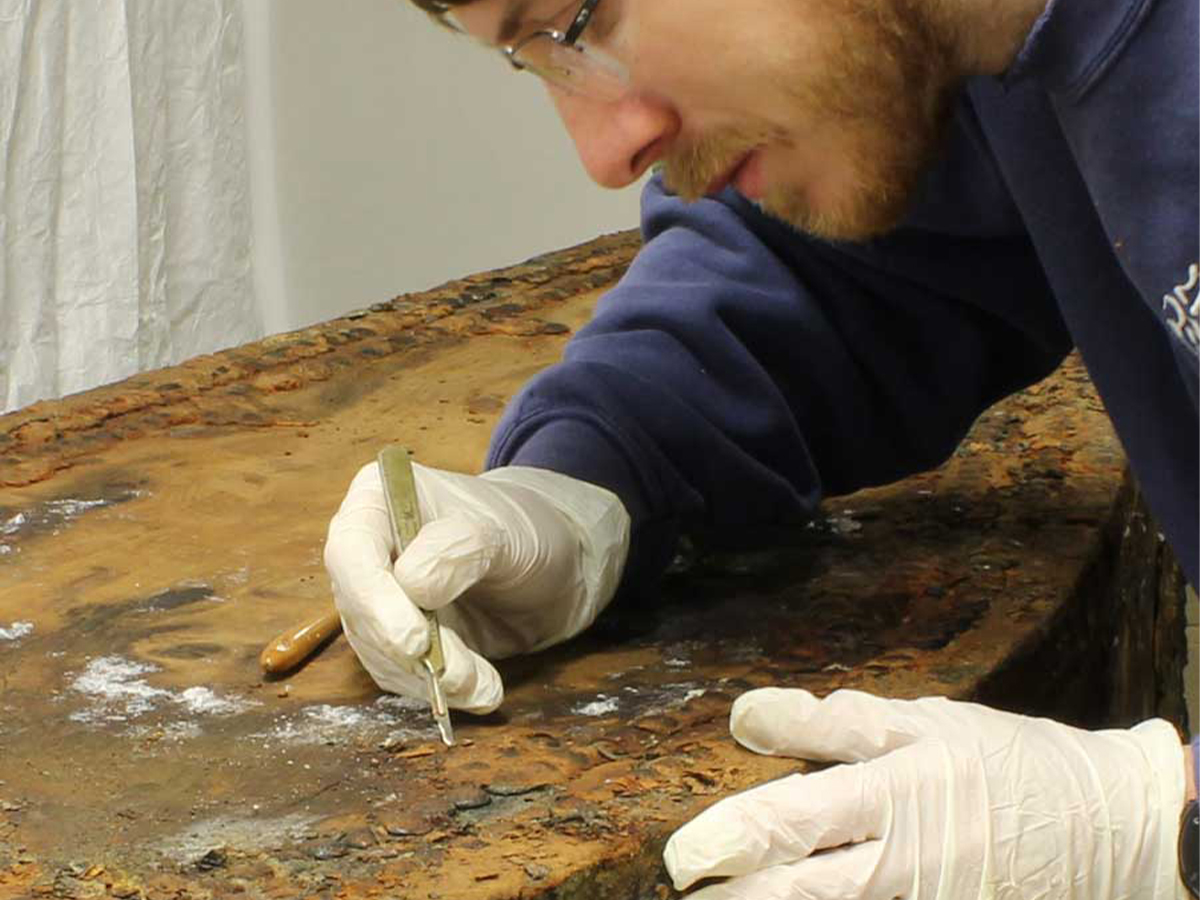Who are we?
At the Mary Rose Trust we have access to more maritime archaeological conservation capacity than any other facility in Europe, if not the world. As a result of our research with maritime museums and universities around the world, we can offer the archaeological community the latest organic waterlogged wood conservation technology. We have acquired unrivalled experience in a variety of fields, including:
- Excavation of the Mary Rose hull, and over 19,000 artefacts, alongside detailed recording of associated archaeological information.
- Conservation of the Mary Rose hull and the artefacts, which consist of both organic, inorganic and composite materials.
- Creation of a purpose-built museum to display the collection, including planning, funding, designing and project management.
- Design of the showcases, preparation of panel and caption copy, interactive and audio-visual displays and mount making.
- Design and implementation of environmental monitoring systems for items both on display and in storage.
- Development of scientific research programmes in a broad range of areas.
- Experience of in-situ monitoring and preservation techniques for the Mary Rose wreck site.
Our conservation facility is based in Portsmouth and contains a range of treatments tanks that have capacity up to 25,000 litres. These are fully accessible with overhead gantries to manoeuvre items. We have 3 different sizes of freeze dryer available for use, including our largest which measures 6 metres in length and 1.5 metres in diameter.

